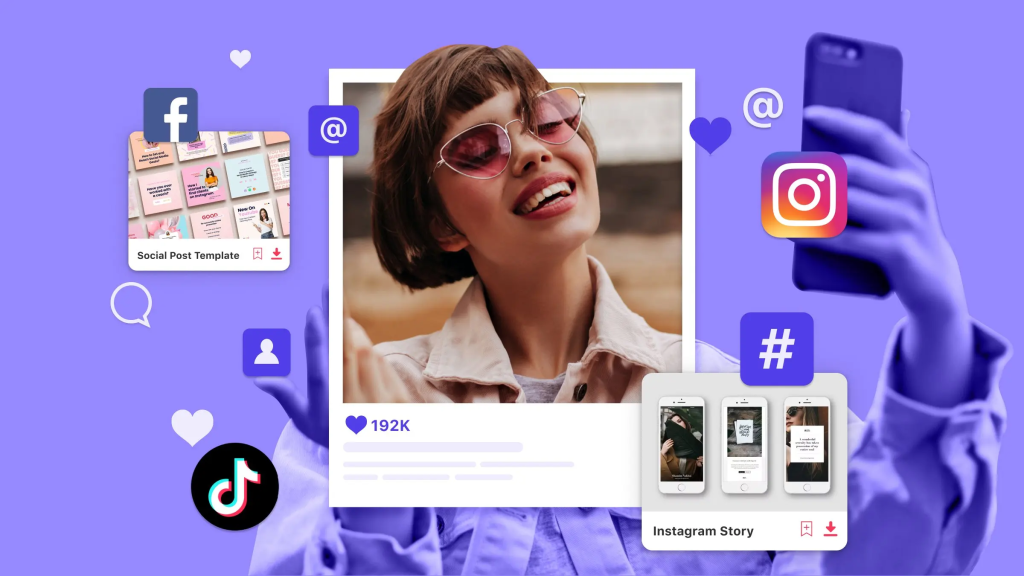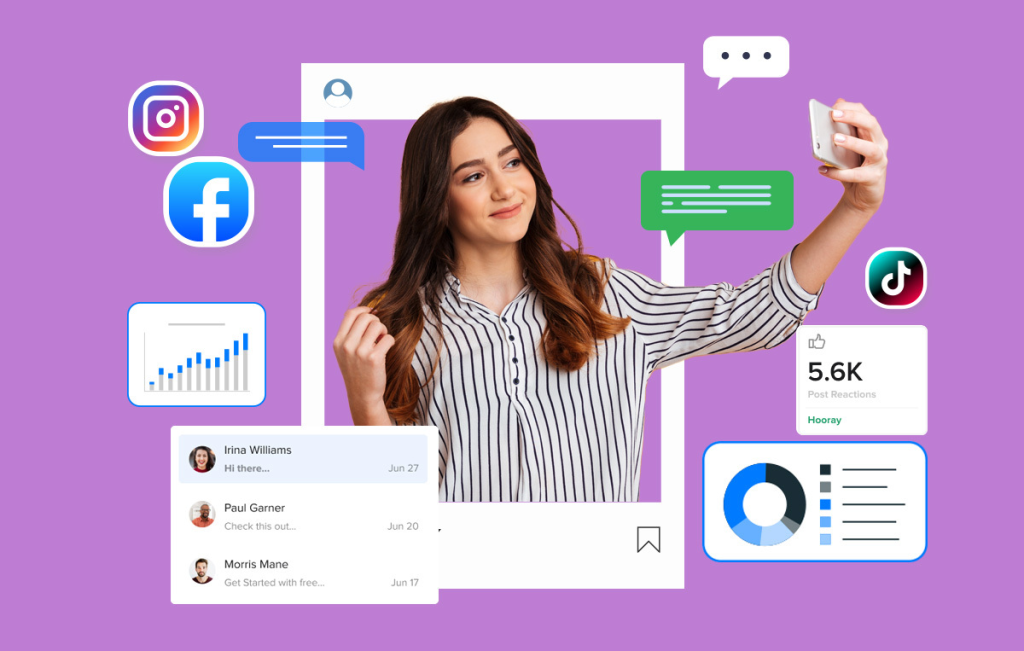In today’s digital age, influencer marketing has become a powerful strategy for brands looking to drive economic growth. With the rise of social media, influencers have amassed large and engaged followings, making them valuable partners for brands. Let’s explore how brands are leveraging these partnerships to achieve their economic goals.

I. Understanding Influencer Marketing
A. What is Influencer Marketing?
- The Role of Influencers
Influencer marketing involves brands collaborating with individuals who have a significant online presence and influence over their followers. These influencers can be found on platforms like Instagram, YouTube, TikTok, and Twitter. For example, a beauty influencer on Instagram might have thousands or even millions of followers who trust their opinions on makeup, skincare, and other beauty products. - The Power of Influence
Influencers have the power to shape their followers’ opinions, preferences, and purchasing decisions. Their recommendations carry weight because they are seen as authentic and relatable. When an influencer endorses a product, their followers are more likely to consider buying it. For instance, a fitness influencer promoting a new line of workout gear can inspire their followers to make a purchase.
B. The Different Types of Influencers
- Macro – Influencers
Macro – influencers typically have a large following, often ranging from 100,000 to several million followers. They are known for their broad reach and can expose a brand to a wide audience. For example, a popular fashion blogger with a million followers can introduce a clothing brand to a vast number of potential customers. - Micro – Influencers
Micro – influencers, on the other hand, have a smaller but highly engaged following, usually between 1,000 and 100,000 followers. They are often experts in a specific niche, such as sustainable fashion or plant – based cooking. Brands partnering with micro – influencers can target a more specific and dedicated audience. For instance, a brand that sells organic skincare products might collaborate with a micro – influencer in the clean beauty niche.
II. How Brands Are Partnering with Influencers for Economic Growth
A. Product Endorsements and Reviews
- Showcasing Products
Brands often provide influencers with their products to showcase to their followers. Influencers can create engaging content, such as product reviews, unboxing videos, or Instagram posts, to highlight the features and benefits of the products. For example, a tech influencer might create a YouTube video reviewing a new smartphone, demonstrating its capabilities and sharing their personal experience. - Building Trust
Honest product reviews by influencers can build trust with their followers. When followers see that an influencer genuinely likes and uses a product, they are more likely to trust the brand. This trust can lead to increased sales. For instance, if a food influencer gives a positive review of a new snack brand, their followers may be more inclined to try it.
B. Brand Awareness Campaigns
- Reaching New Audiences
Influencers can help brands reach new audiences that they might not have been able to reach otherwise. By leveraging the influencer’s existing following, brands can expand their reach and increase brand awareness. For example, a small local business can partner with an influencer in their area to introduce their products or services to a wider local audience. - Creating Viral Content
Influencers are skilled at creating content that has the potential to go viral. A viral post or video can generate a significant amount of buzz around a brand, increasing its visibility. For instance, a creative TikTok challenge sponsored by a brand and promoted by influencers can attract thousands or even millions of views, boosting brand awareness.

C. Driving Sales and Conversions
- Exclusive Discounts and Promotions
Brands often offer exclusive discounts or promotions through influencers. Influencers can share these offers with their followers, providing an incentive for them to make a purchase. For example, an influencer might share a discount code with their followers, and when the followers use the code at checkout, they can get a certain percentage off their purchase. - Call – to – Action (CTA)
Influencers include clear calls – to – action in their content. This could be something like “Shop now,” “Click the link in my bio,” or “Use this code to get your discount.” By including a CTA, influencers can drive their followers to the brand’s website or online store, increasing the likelihood of a sale.
III. Challenges and Considerations in Influencer Marketing
A. Finding the Right Influencers
- Aligning with Brand Values
Brands need to ensure that the influencers they partner with align with their brand values. For example, a sustainable fashion brand should partner with influencers who are also passionate about sustainability. If there is a mismatch in values, it can lead to a negative impact on the brand’s reputation. - Evaluating Engagement Rates
It’s important to evaluate an influencer’s engagement rates. High follower numbers don’t always mean high engagement. Brands should look for influencers who have an engaged audience, as these influencers are more likely to drive results. For instance, an influencer with a smaller following but high engagement rates may be more effective than an influencer with a large but disengaged following.
B. Measuring the Success of Influencer Marketing Campaigns
- Key Performance Indicators (KPIs)
Brands need to define and track relevant KPIs to measure the success of their influencer marketing campaigns. These KPIs can include metrics like website traffic, sales, conversion rates, and social media engagement. For example, if a brand’s goal is to increase sales, they can track the number of sales generated through the influencer’s unique link or discount code. - Return on Investment (ROI)
Calculating the ROI of influencer marketing campaigns is crucial. Brands need to compare the cost of the partnership with the revenue generated. This helps them determine whether the influencer marketing campaign is worth the investment. For instance, if a brand spends $10,000 on an influencer partnership and generates $50,000 in sales, the ROI is positive.
C. Maintaining Authenticity
- Transparency and Disclosure
Influencers need to be transparent about their partnerships with brands. They should disclose when they are promoting a product or service. This helps maintain trust with their followers. For example, an influencer should include a hashtag like #ad or #sponsored in their posts when they are being paid to promote a brand. - Authentic Content Creation
Brands should encourage influencers to create authentic content. Authentic content is more likely to resonate with followers. For example, instead of a scripted product endorsement, an influencer could share a personal story about how the product has benefited them.

In conclusion, influencer marketing is a valuable strategy for brands looking to achieve economic growth. By understanding the different aspects of influencer marketing, leveraging partnerships effectively, and addressing the challenges, brands can harness the power of influencers to increase brand awareness, drive sales, and build a loyal customer base. As social media continues to evolve, influencer marketing is likely to remain an important part of the marketing mix for many brands.





